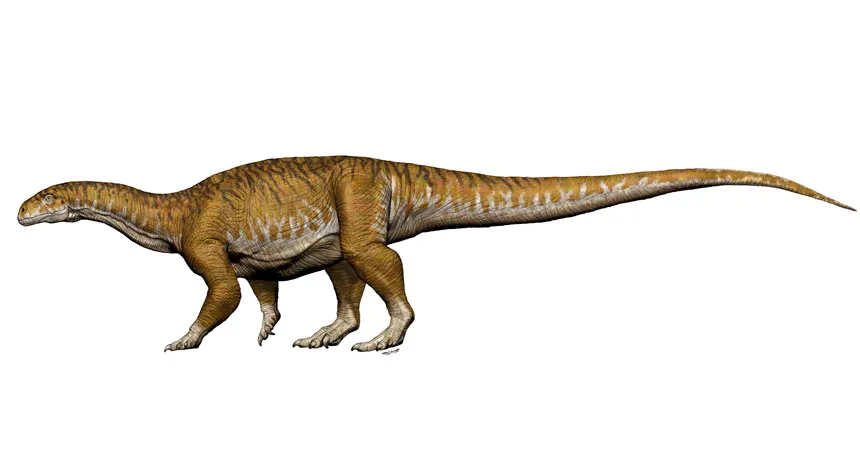Long-necked dinosaurs grew to be giants in more ways than one
Fossils suggest some early sauropod relatives grew massive using a previously unknown method

GETTING BIG Some early relatives – such as Ingentia prima, illustrated – of giant long-necked sauropods may have had a unique way of growing to such a large size.
Jorge A. González
- More than 2 years ago
For sauropods — the largest animals known to have walked on Earth — there may have been more than one way to get gigantic.
Most early relatives of the herbivorous dinosaurs have a suite of features once thought to be the essential blueprint for gigantism, such as sturdy pillarlike legs, elongated necks and forelimbs, and bones that grew continuously rather than in seasonal spurts. But an analysis of fossils of sauropodomorphs — a group that includes sauropods and some ancestors and similarly shaped relatives — suggests that some of the dinos may have had a different strategy for becoming behemoths, researchers report online July 9 in Nature Ecology and Evolution.
Paleontologist Cecilia Apaldetti of the Universidad Nacional de San Juan in Argentina and colleagues examined four sauropodomorphs, including one newly identified species that the team dubbed Ingentia prima and three already known specimens of a sauropodomorph called Lessemsaurus sauropoides. Dating to the Late Triassic, between 237 million and 201 million years ago, these “Lessemsauridae” were far from puny: The animals weighed in at an estimated 7 to 10 metric tons, larger than an African elephant.
All four specimens showed a combination of features that was distinct from sauropods as well as from other sauropodomorphs. Instead of upright, pillarlike legs, the dinos had crouched hind limbs and flexed front limbs, with elbows splayed slightly outward. Patterns of bone growth in the fossils also suggest that the animals grew in cyclical spurts rather than continuously. However, their bone growth was extremely rapid, a feature unique to this group, Apaldetti says. “They grew in a cyclical but extremely accelerated growth, at a speed even higher than that of the giants that grew continuously.”
Like later sauropods, I. prima and L. sauropoides also appear to have had a birdlike respiratory system, the researchers found. Air sacs within the animals’ vertebrae provided large reserves of oxygenated air, helped keep their bodies cool despite their large size, and lightened the weight of their vertebrae.
Martin Sander, a vertebrate paleontologist at Universität-Bonn in Germany, says that I. prima presents the best proof yet that these sauropodomorphs had this birdlike respiratory system, a fact that wasn’t previously determined. However, he says he is not convinced that the Lessemsauridae were on a separate track toward gigantism. “For me, it’s more of an intermediate stage,” Sander says.
That sentiment is echoed by Jeffrey Wilson, a vertebrate paleontologist at the University of Michigan in Ann Arbor. Lessemsauridae bone growth was cyclical, but that doesn’t necessarily mean the cycles were seasonal; there may have been long time lags in between growth spurts, part of a transition to more sauropod-like growth patterns, Wilson says. “One of the things I think future work will do is help resolve the ambiguity over whether the Lessemsauridae were taking their own adventure into gigantism.”
The Lessemsauridae may have developed their growth strategy some 30 million years earlier than Jurassic sauropods, such as Brachiosaurus and Diplodocus, Apaldetti notes. But ultimately, the Jurassic giants “were more successful,” she says — they outweighed the sauropodomorphs by as much as 60 tons, and outlasted them by tens of millions of years.







